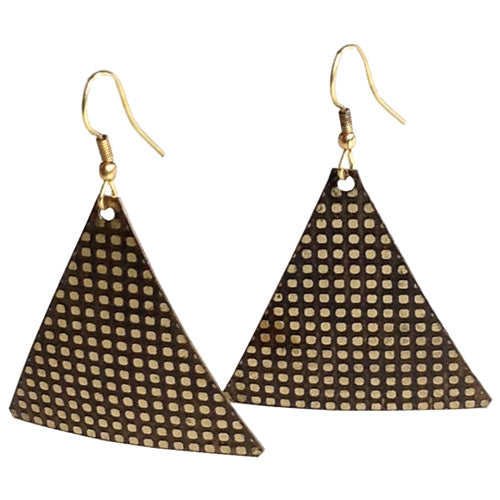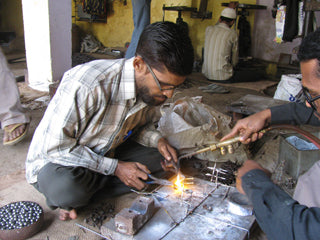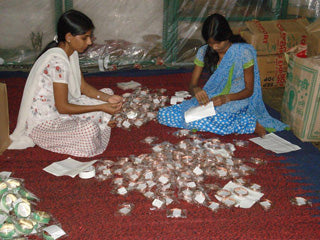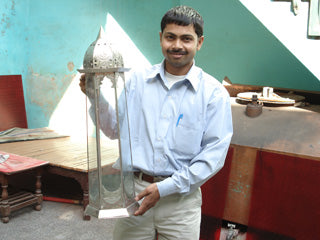OWP
Pendientes triangulares de metal texturizado- Comercio justo- Arca de Noé- India
Pendientes triangulares de metal texturizado- Comercio justo- Arca de Noé- India
No se pudo cargar la disponibilidad de retiro
Estos aretes triangulares texturizados están hechos de metales reciclados. Los artesanos del Arca de Noé trabajan con materiales recuperados como metal, madera y vidrio para crear productos únicos y ecológicos. Manténgase al día con el reciclaje, la reutilización y la reducción: ¡estos aretes son los accesorios de moda perfectos de hoy en día!
Noah's Ark es una ONG fundada en 1986 por Samuel Masih, uno de los líderes que introdujo el concepto de comercio justo en la India. Mientras trabaja con varios artesanos, Noah's Ark también apoya a los artesanos y sus comunidades con muchos proyectos de bienestar.
- Mida 1-1/2” de alto x 1-1/2” de ancho
- Adjunto a ganchos en forma de S plateados
Hecho a mano en la India y importado de comercio justo.
Para obtener más información sobre los artesanos que crean estos maravillosos artículos ecológicos y las técnicas que utilizan, haga clic en "Acerca de los artesanos" a continuación.
Share
About the Artisans
About the Artisans
 Joyeria Semilla meaning Seed Jewelry is a small fair-trade workshop in the Andean town of Villa de Leyva, Colombia. Girasol Taborda, a local artisan and social entrepreneur, started the workshop in the mid-1990s.
Joyeria Semilla meaning Seed Jewelry is a small fair-trade workshop in the Andean town of Villa de Leyva, Colombia. Girasol Taborda, a local artisan and social entrepreneur, started the workshop in the mid-1990s.
Joyeria Semilla’s objective is three-folds; to create new jobs, revive Colombia's handicrafts sector and to motivate locals to better manage their natural resources. The organization works primarily with socially and economically disadvantaged youths, single mothers and people with disabilities in the area. The company offers free training in product design, technical training and marketing to new members. Joyeria Semilla has trained them in the craft of jewelry-making.

Caña Flecha or “Gynerium Sagittatum” is a locally found palm tree in the regions of the Caribbean coast. The leaves from this plant are used for making jewelry, woven hats, bags and baskets. The Zenú Indians were and their descendants inherited the tradition of picking veins of the green palm leaf for weaving. These veins were made into woven hats and other products for their personal use.
The Zenú culture is said to have existed between 200BC to1600AD. With the arrival of the colonizers in the 16th century, the indigenous community declined of unknown reasons. Today a very small population remains that claims the inheritance of the almost extinct Zenú tribe. Known for their skills in the construction of major waterworks, canals and irrigation system along with being skilled goldsmiths, examples of their accomplished craftsmanship are found in various museums around the world. Their larger means of subsistence were hunting, farming, fishing and trading.
Caña Flecha is found in abundance in the region, and hence makes for a sustainable and naturally available raw material for these products. Every bit of the plant is utilized – from using in building walls and roofs in houses to food for cattle and medicinal purposes. It is from the central vein of the leaf that the fibers for weaving are obtained. After the hard surface is peeled off, the fibers are left in the sun to dry and undergo a natural tinting process; these fibers are barely about 1 millimeter in thickness and hence call for a lot of skill and patience to weave with. The dried fibers are then processed for natural coloration - some are boiled with lemon to whiten them and some are treated with mud and boiled with plantain leaves to blacken them. The designs are based on ancient motifs and mathematical representations, which are inspired by the early Zenú culture.








